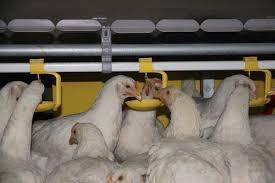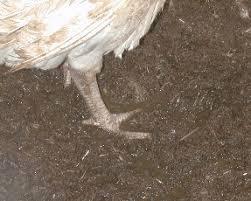 Michael Czarick of the Poultry Science Department, University of Georgia recently completed Project F-085 funded by the USPOULTRY Foundation to evaluate drip trays for nipple type drinkers. The study was conducted on a commercial farm comprising three houses each divided into four sections. Five of the sections were fitted with nipple drinkers with drip trays and five sections with identical nipple drinkers without drip trays as controls. Two sections were equipped with two drinker lines with drip trays and two without. The report did not specify the make or model of the nipple drinkers evaluated.
Michael Czarick of the Poultry Science Department, University of Georgia recently completed Project F-085 funded by the USPOULTRY Foundation to evaluate drip trays for nipple type drinkers. The study was conducted on a commercial farm comprising three houses each divided into four sections. Five of the sections were fitted with nipple drinkers with drip trays and five sections with identical nipple drinkers without drip trays as controls. Two sections were equipped with two drinker lines with drip trays and two without. The report did not specify the make or model of the nipple drinkers evaluated.
There were no significant differences in “water usage”, assumed to be the readings of water meters with or without drip trays beneath the nipple drinkers. Litter from the sections fitted with drip trays had lower moisture content and water activity from day-7 through depletion. Through the first 21 days of the trial, there were no differences in the prevalence of footpad lesions in flocks that could be attributed to installation of drip trays. All four flocks without drip trays showed numerically higher (but non-statistically different) footpad lesion scores at 28-days of age. Despite isolation of Salmonella from litter in preceding flocks, the pathogen was not isolated from drip trays.
The results that appear to favor installation of catch trays should be evaluated in relation to the concepts expressed in an interview with Robert Hosteler of Ziggity Systems posted in this edition of CHICK-NEWS. Appropriate adjustment of water pressure in relation to the dynamic discharge rate of the nipple drinker line relative to the growth rate of the flock, house temperature and water quality, will determine the proportion of water ingested relative to the quantity of water released from a nipple. The difference between water delivered and water ingested represents wastage. Drip trays are intuitively beneficial if the water discharged from a nipple drinker delivers a volume in excess of the capacity of the oral cavity. Water will dribble from the beak opening before being swallowed. An analogy is the ability to drink from a garden hose on a hot day. Only a fraction of water released from the nozzle is actually swallowed.
 The observation that Salmonella could not be isolated from drip trays is inconsistent with the fact that bacteriologic assay of the muddy residue in trays invariably indicates heavy bacterial contamination recorded by laboratories as “Too Numerous to Count’ (TNC). Since broilers display coprophagy, drinking from drip trays should in theory result in ingestion of whatever bacteria are present in the litter. Installation of drip trays defeats the objective of a closed watering system intended to reduce intra-flock transmission of pathogens.
The observation that Salmonella could not be isolated from drip trays is inconsistent with the fact that bacteriologic assay of the muddy residue in trays invariably indicates heavy bacterial contamination recorded by laboratories as “Too Numerous to Count’ (TNC). Since broilers display coprophagy, drinking from drip trays should in theory result in ingestion of whatever bacteria are present in the litter. Installation of drip trays defeats the objective of a closed watering system intended to reduce intra-flock transmission of pathogens.
The conclusion that may be derived from the study is that if nipple drinker watering systems are managed inappropriately or if ventilation rate is too low to remove moisture from litter, drip trays are advantageous. If nipple drinkers with appropriate dynamic water discharge rates are installed and the system is managed appropriately with respect to water column pressure and house ventilation, drip cups are unnecessary and could be deleterious.